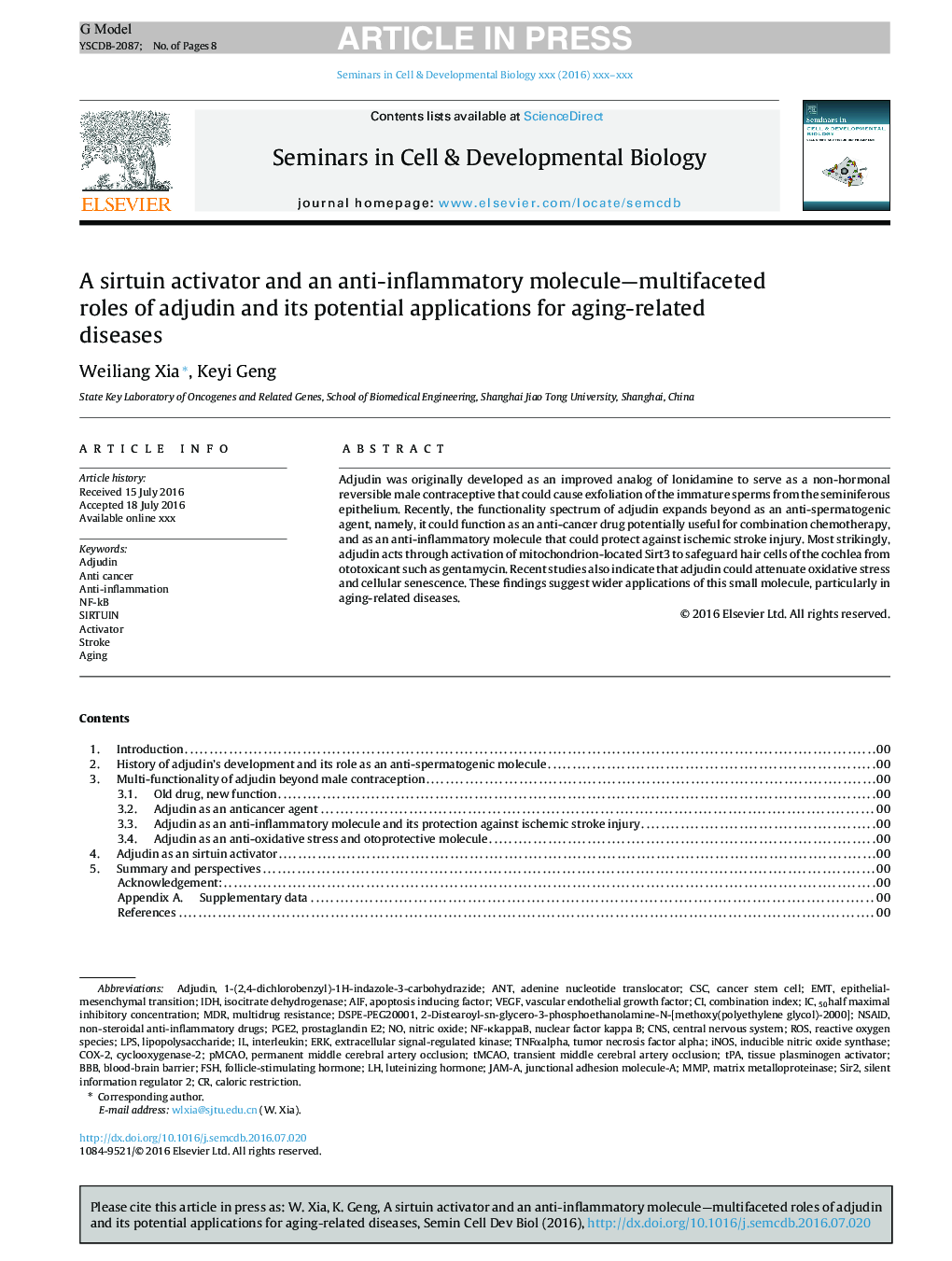| Article ID | Journal | Published Year | Pages | File Type |
|---|---|---|---|---|
| 5534972 | Seminars in Cell & Developmental Biology | 2016 | 8 Pages |
Abstract
Adjudin was originally developed as an improved analog of lonidamine to serve as a non-hormonal reversible male contraceptive that could cause exfoliation of the immature sperms from the seminiferous epithelium. Recently, the functionality spectrum of adjudin expands beyond as an anti-spermatogenic agent, namely, it could function as an anti-cancer drug potentially useful for combination chemotherapy, and as an anti-inflammatory molecule that could protect against ischemic stroke injury. Most strikingly, adjudin acts through activation of mitochondrion-located Sirt3 to safeguard hair cells of the cochlea from ototoxicant such as gentamycin. Recent studies also indicate that adjudin could attenuate oxidative stress and cellular senescence. These findings suggest wider applications of this small molecule, particularly in aging-related diseases.
Keywords
LPSERKCSCNSAIDANTPGE2IDHMDRAdjudinROSAIFIsocitrate dehydrogenaseinterleukinadenine nucleotide translocatorEMTNon-steroidal anti-inflammatory drugsCNScancer stem cellcentral nervous systemcombination indexapoptosis inducing factorVascular endothelial growth factorVascular Endothelial Growth Factor (VEGF)nuclear factor kappa BlipopolysaccharideMultidrug resistanceNitric oxideProstaglandin E2extracellular signal-regulated kinaseEpithelial-mesenchymal transitionReactive oxygen species
Related Topics
Life Sciences
Biochemistry, Genetics and Molecular Biology
Cell Biology
Authors
Weiliang Xia, Keyi Geng,
